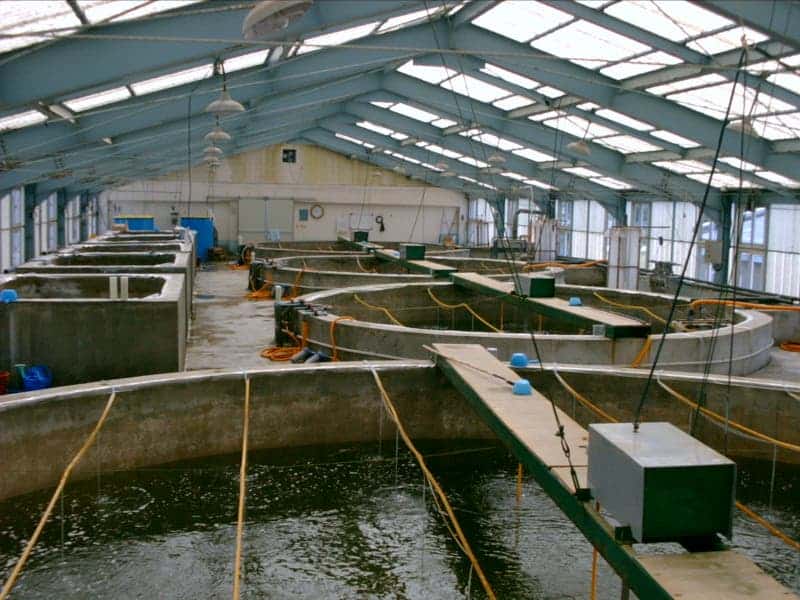The evidence is pilling up that fish grown in hatcheries are very different from those in the wild. A new study found that after only one generation, hatchery salmon have significant genetic changes.
A fish hatchery is a “place for artificial breeding, hatching and rearing through the early life stages of animals, finfish and shellfish in particular”. With fish stocks being overexploited or depleted in many parts of the world fish hatcheries have become a blooming business, but there are severe problems with aquaculture – including genetic problems.
The first such problem is that maintenance of a small number of broodstock can cause inbreeding and potentially create unhealthy, malformed populations. Over the course of several generations, the effects of inbreeding can be devastating. However, a new study found that even after one generation big differences emerge.
The research, published today in Nature Communications, found that between wild fish and their hatchery offspring over 700 genes exhibit different activity. Oregon State University in collaboration with the Oregon Department of Fisheries and Wildlife claim that this is strong evidence that hatchery fish simply aren’t like wild fish.
“A fish hatchery is a very artificial environment that causes strong natural selection pressures,” said Michael Blouin, a professor of integrative biology in the OSU College of Science. “A concrete box with 50,000 other fish all crowded together and fed pellet food is clearly a lot different than an open stream.”
It’s not yet clear what traits are passed on or how the change in evolutionary pressure affects the fish, but there are clues that hatchery fish are weaker and metabolize their food differently. Because they are crammed in a very small space, diseases and injuries are also more common than in the wild.
“We observed that a large number of genes were involved in pathways related to wound healing, immunity, and metabolism, and this is consistent with the idea that the earliest stages of domestication may involve adapting to highly crowded conditions,” said Mark Christie, lead author of the study.
These genetic changes are substantial and surprisingly rapid, the study finds. That evolution could cause such a big change in only one generation is a surprise.
“We expected hatcheries to have a genetic impact,” Blouin said. “However, the large amount of change we observed at the DNA level was really amazing. This was a surprising result.”










